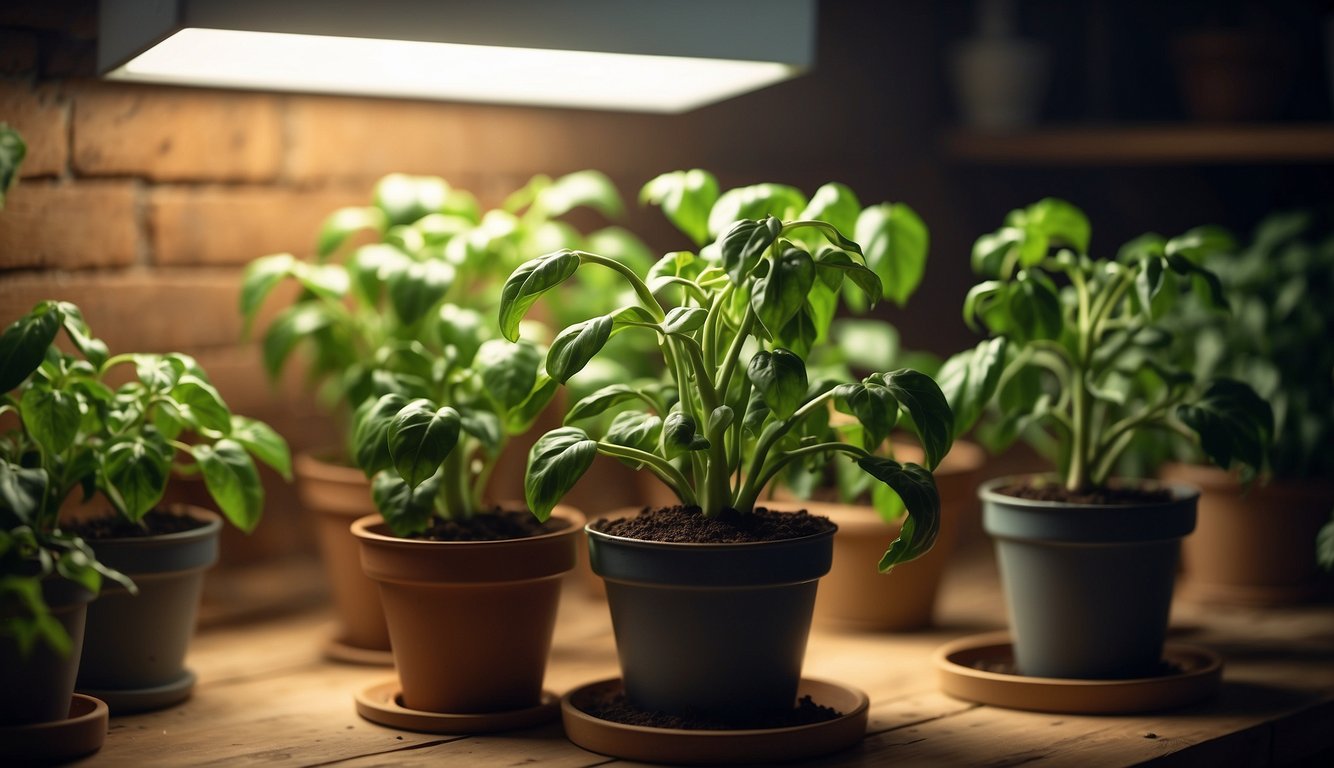TheHerbProf.com is a treasure trove of knowledge for those interested in natural healing and herbal remedies. The website is run by Paul Johnston MD. A naturopathic who has not only received extensive education in the field but also has personal experience in self-healing.
Grow peppers indoors year round is a great way to enjoy fresh produce even when outdoor growing conditions are less than ideal. Indoor gardening has become increasingly popular in recent years, and growing peppers indoors is one of the easiest and most rewarding indoor gardening projects. With the right supplies and a bit of know-how, anyone can grow peppers indoors.
Indoor pepper plants require a few additional items to be successful, such as a grow light and a few other supplies. The most important item will be a grow light, which provides the necessary light for the plants to grow and thrive. Additionally, indoor pepper plants will need to be watered regularly and provided with the proper nutrients to ensure healthy growth. With the right care and attention, indoor pepper plants can produce a bountiful harvest year-round, providing a source of fresh peppers for all your culinary creations.
Choosing the Right Pepper Varieties for Indoor Cultivation
When it comes to growing peppers indoors, choosing the right pepper varieties is crucial. Not all peppers are created equal, and some are better suited for indoor cultivation than others. In this section, I will provide you with a list of the best pepper varieties to grow indoors.
Compact Pepper Varieties
Compact pepper varieties are the best choice for indoor cultivation. These varieties are ideal because they don’t take up too much space and are easier to manage. Bell peppers are a good example of a compact pepper variety that can be grown indoors. However, they don’t fruit as prolifically as some smaller chili plants.
Spicy Pepper Varieties
If you prefer a spicier pepper, look for varieties such as habaneros, scotch bonnet, shishito, serrano, pequin, chiltepin, or Thai chili. These varieties are known for their heat and are perfect for adding a bit of spice to your indoor garden.
Ornamental Pepper Varieties
Ornamental peppers are another great option for indoor cultivation. These varieties are known for their vibrant colors and unique shapes, making them a great addition to any indoor garden. Some popular ornamental pepper varieties include Black Pearl, Numex Twilight, and Purple Flash.
Capsicum Annuum Varieties
Capsicum annuum is a popular pepper species that includes many different varieties. This species is ideal for indoor cultivation because it is easy to grow and produces high yields. Some popular capsicum annuum varieties include Anaheim, Jalapeno, and Poblano.
Best Varieties of Peppers to Grow Indoors
In summary, the best varieties of peppers to grow indoors are compact pepper varieties, spicy pepper varieties, ornamental pepper varieties, and capsicum annuum varieties. When choosing your pepper varieties, make sure to consider your personal preferences and the growing conditions of your indoor garden. With the right pepper varieties, you can enjoy fresh, homegrown peppers year-round!
Essential Equipment for Indoor Pepper Growth
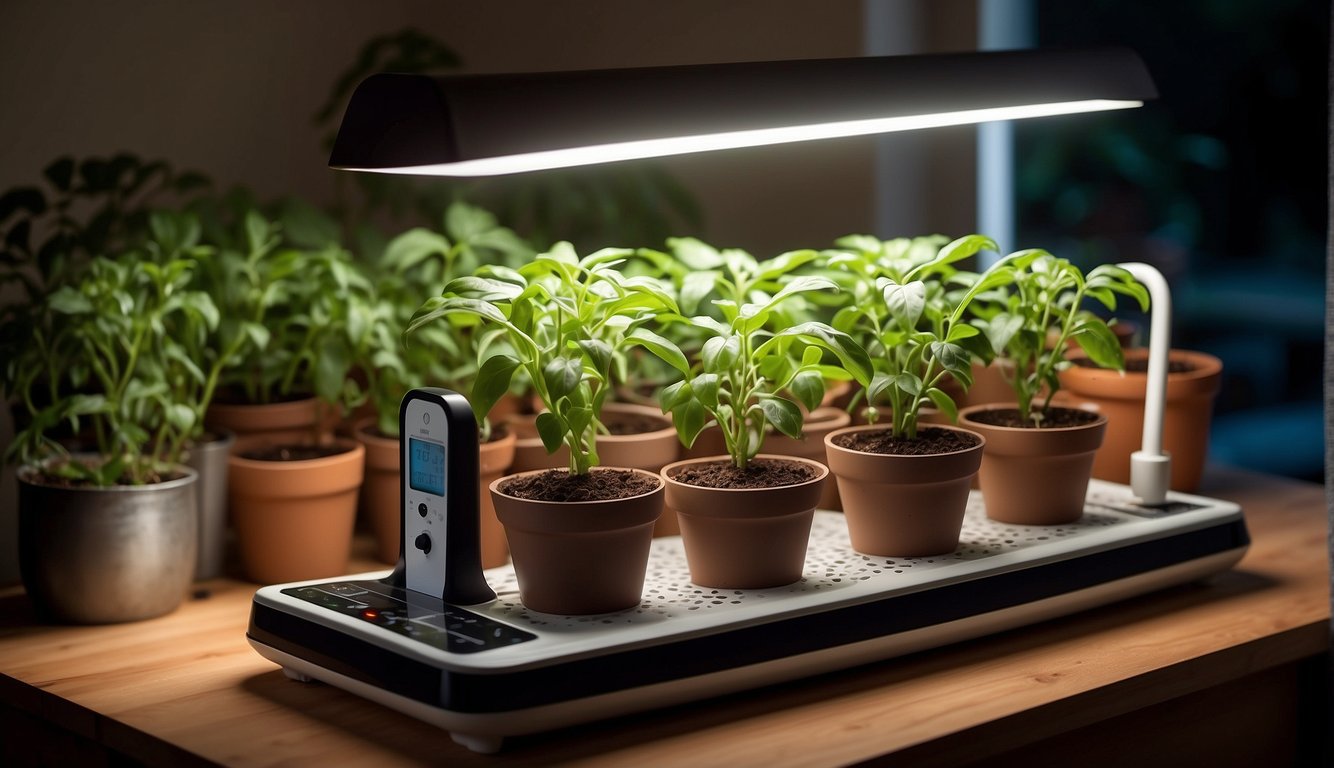
Growing peppers indoors year round requires some essential equipment to ensure success. Here are the three most important items you’ll need:
Appropriate Containers
Choosing the right container is crucial for indoor pepper growth. You’ll want to select a container that is at least 12 inches deep and 12 inches wide to give your pepper plants plenty of room to grow. Additionally, make sure the container has drainage holes to prevent water from accumulating and causing root rot. You can use plastic or ceramic containers, but avoid using metal containers as they can heat up and damage the roots.
Quality Potting Mix – Grow Peppers Indoors Year Round
Pepper plants require well-draining soil that is rich in nutrients. You can use a pre-made potting mix or make your own by combining equal parts of peat moss, perlite, and vermiculite. Adding compost to the potting mix can also help improve soil fertility. Before planting your pepper seeds, make sure the potting mix is moist but not waterlogged.
Grow Lights
Pepper plants require at least 8 hours of bright light each day to thrive. If you don’t have access to a south-facing window that provides sufficient light, you’ll need to invest in grow lights. LED grow lights are the most energy-efficient and effective option for indoor pepper growth. Place the grow lights 6-12 inches above the plants, and keep them on for 12-16 hours per day. You can use an outlet timer to automate the lighting schedule.
By having appropriate containers, quality potting mix, and grow lights, you’ll be well on your way to growing healthy and productive pepper plants indoors year-round.
Key Techniques for Grow Peppers Indoors Year Round
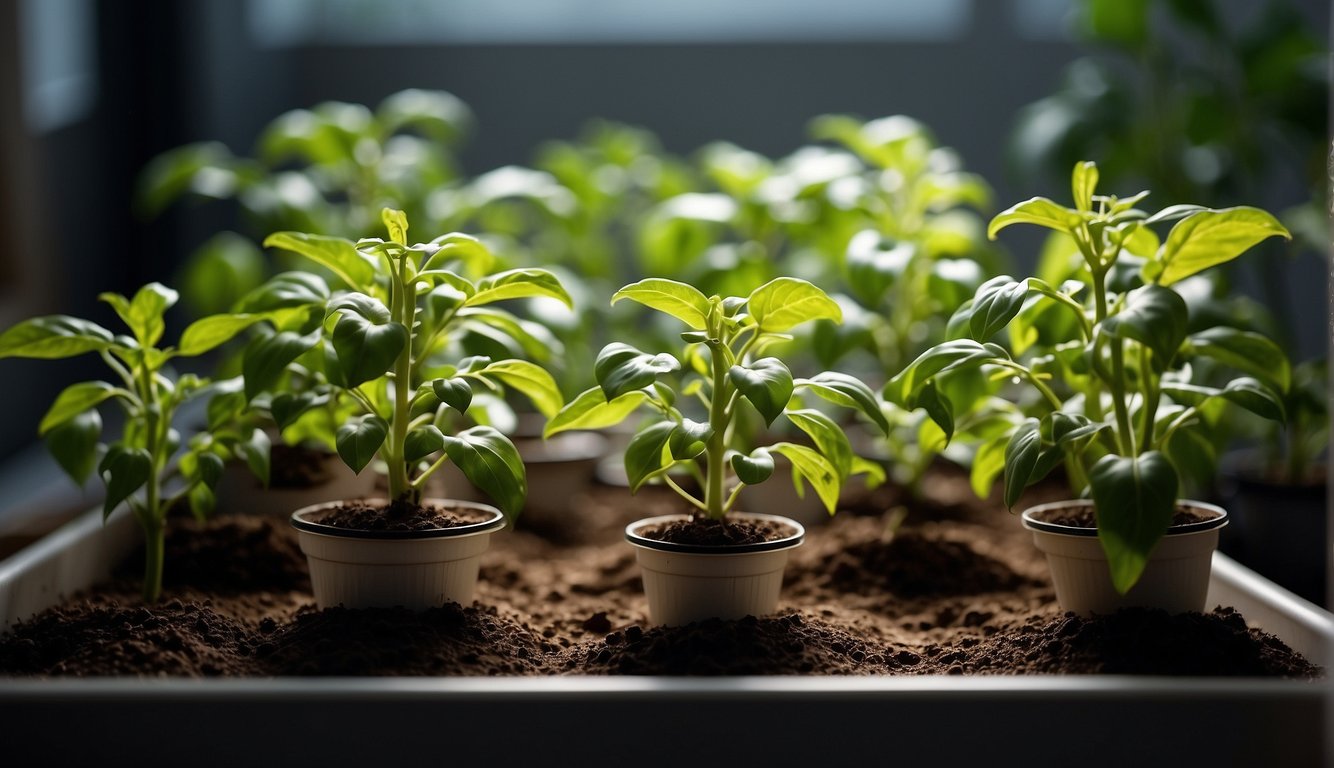
Growing peppers indoors year round requires attention to detail and a few key techniques to ensure a bountiful harvest. Here are some important factors to consider when growing peppers indoors.
Proper Watering Practices – Grow Peppers Indoors Year Round
Pepper plants require consistent moisture to thrive. Overwatering can lead to root rot, while underwatering can cause the plants to wilt and die. I recommend using a watering can to ensure even distribution of water. Water the plants when the top inch of soil feels dry to the touch. Avoid getting water on the leaves as this can lead to fungal growth.
Maintaining Optimal Temperature
Pepper plants prefer warm temperatures between 70-80°F during the day and 60-70°F at night. I suggest using a heating pad to maintain consistent temperatures, especially during the winter months. Avoid placing the plants near cold drafts or in areas with fluctuating temperatures.
Boosting Indoor Humidity
Pepper plants require a moderate level of humidity to thrive. I recommend using a humidifier or placing a tray of water near the plants to increase humidity levels. This is especially important during the winter months when indoor heating can cause dry air.
Regular Fertilization
Pepper plants require regular fertilization to ensure healthy growth and fruit production. I recommend using a balanced fertilizer with equal parts nitrogen, phosphorus, and potassium. Apply the fertilizer every two weeks during the growing season, and reduce frequency during the winter months.
Hand-pollination Techniques – Grow Peppers Indoors Year Round
Pepper plants are self-pollinating, but indoor plants may require hand-pollination to ensure proper fruit development. I suggest using a small paintbrush to transfer pollen from the stamen to the pistil. Gently brush the inside of each flower to ensure proper pollination.
By following these key techniques, you can successfully grow peppers indoors year-round. Remember to provide ample sunlight, support for the plants, and maintain proper soil moisture and organic matter. With a little care and attention, you can enjoy fresh peppers right from your indoor garden.
Pest Control Strategies for Indoor Peppers
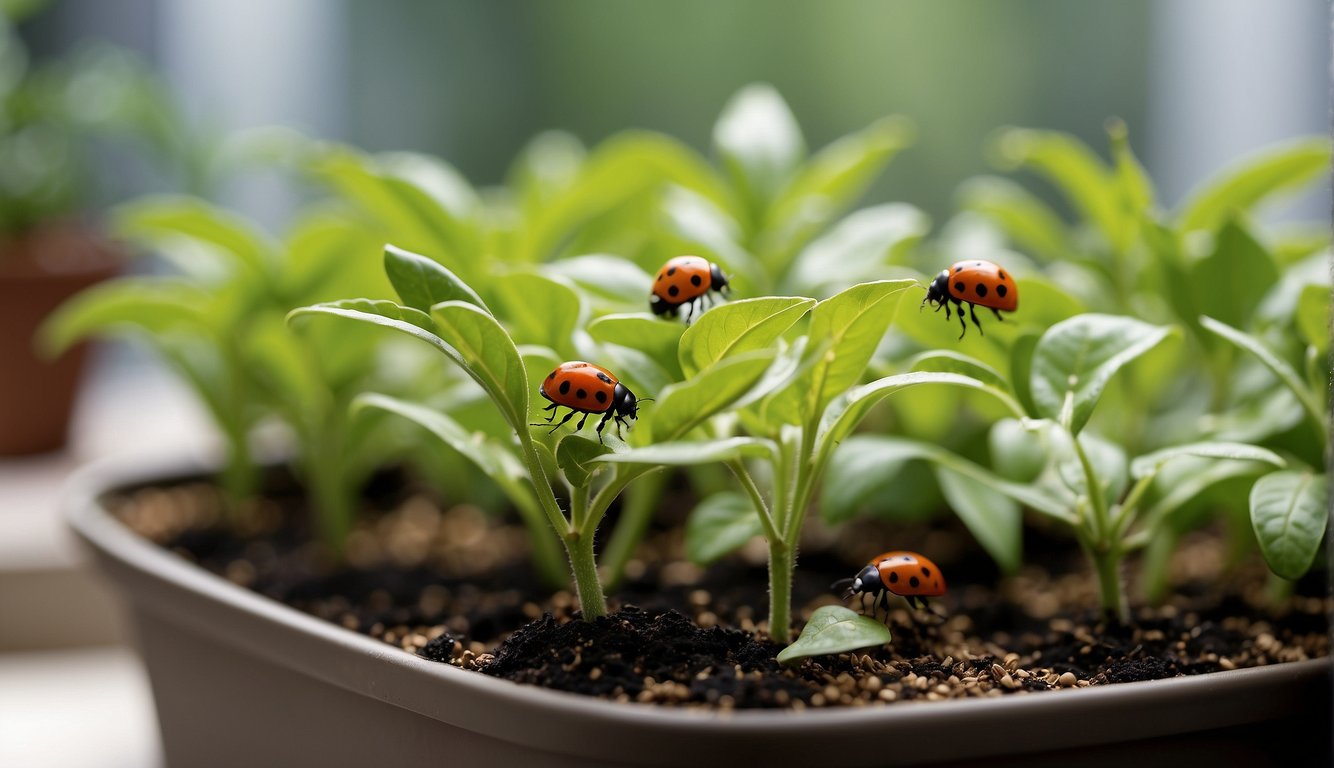
As with any plant, indoor peppers are susceptible to pests and diseases. However, the good news is that by taking a few preventative measures, you can keep your indoor pepper plants healthy and pest-free. Here are some strategies for controlling pests in your indoor pepper garden.
1. Keep Your Plants Clean
One of the easiest ways to prevent pests from infesting your indoor pepper plants is to keep them clean. Regularly clean the leaves and stems of your plants with a damp cloth to remove any dust or debris. This will help prevent pests from finding a home on your plants.
2. Use Beneficial Insects – Grow Peppers Indoors Year Round
Another way to control pests in your indoor pepper garden is to introduce beneficial insects. Ladybugs, lacewings, and praying mantises are all natural predators of common indoor plant pests like aphids and spider mites. You can purchase these insects online or at your local garden center.
3. Use Organic Pest Control Methods
If you do have a pest problem, there are a variety of organic pest control methods you can use. Neem oil, insecticidal soap, and diatomaceous earth are all effective at controlling pests without harming your plants or the environment. Be sure to follow the instructions carefully when using these products.
4. Prevent Disease
In addition to pests, indoor pepper plants can also be susceptible to diseases. To prevent disease, make sure your plants are getting enough light and air circulation. Avoid overwatering your plants, as this can lead to root rot and other fungal diseases. If you do notice signs of disease, such as yellowing leaves or spots on the leaves, remove the affected plant immediately to prevent the disease from spreading.
By following these pest control strategies, you can keep your indoor pepper plants healthy and thriving year-round.
Harvesting and Ongoing Plant Care – Grow Peppers Indoors Year Round
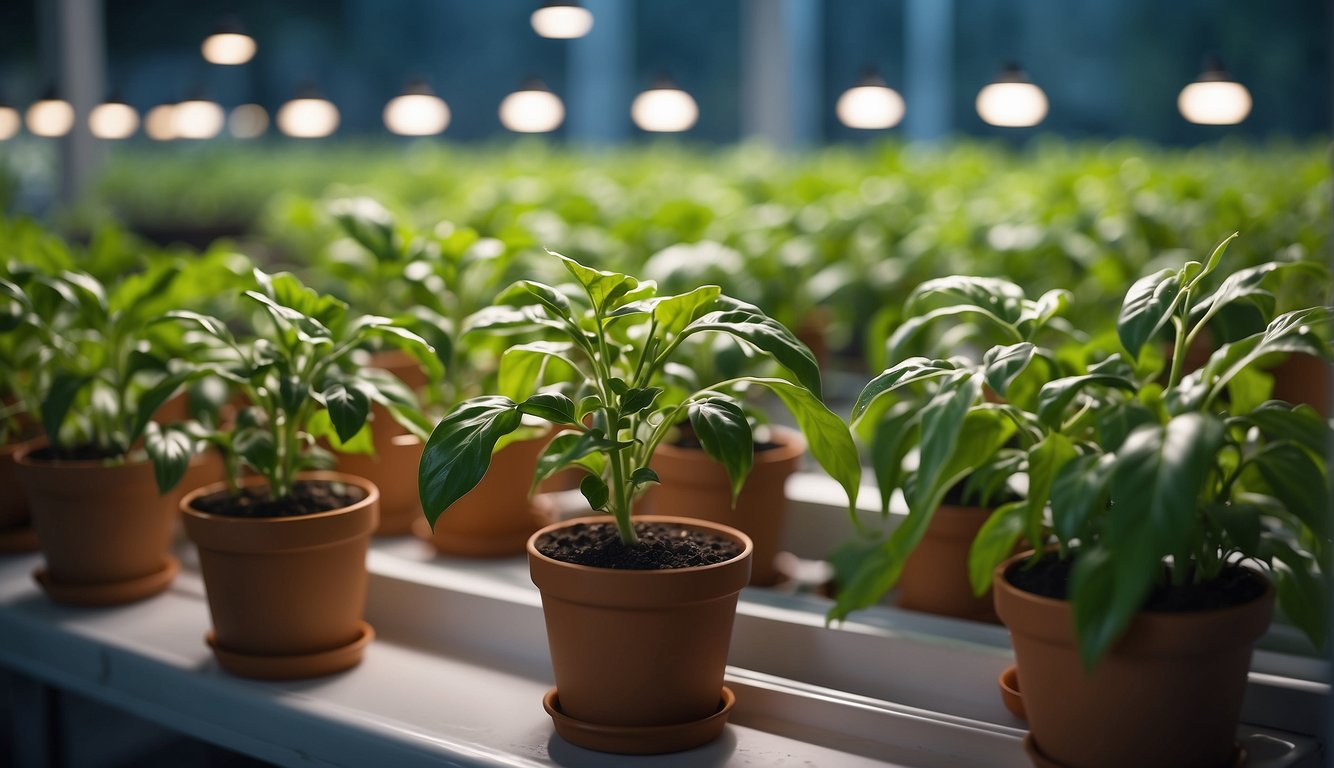
Growing peppers indoors year round can be a rewarding and fruitful experience. Once your pepper plants have matured, you can start harvesting your peppers. The timing of your harvest will depend on the type of pepper you are growing, but generally, peppers are ready to be picked when they have reached their full size and color.
To harvest your peppers, simply use a pair of scissors or a sharp knife to cut the stem that connects the pepper to the plant. Be sure to leave a small portion of the stem attached to the pepper to prevent damage to the fruit.
After harvesting, it is important to continue caring for your indoor pepper plants. Regular watering and fertilization are key to ensuring that your plants continue to produce peppers. If your plants start to outgrow their container, you may need to transplant them into a larger pot.
If You Have An Abundance Of Pepper
Consider freezing them for later use. Simply wash and dry the peppers, remove the stem and seeds, and cut them into small pieces. Place the pieces in a freezer-safe container and store in the freezer for up to six months.
If you are growing smaller peppers or compact plants, you may want to consider pickling them. Pickling is a great way to preserve your peppers and add some flavor to your meals. You can also dry your peppers to use as a spice or seasoning.
Pollination is another important aspect of caring for your indoor pepper plants. Unlike outdoor pepper plants, indoor plants may not have access to natural pollinators like bees. To ensure that your plants are properly pollinated, you can use a small paintbrush or cotton swab to transfer pollen from one flower to another.
In colder climates, it is important to keep your indoor pepper plants away from drafts and cold temperatures. You may also need to provide additional heat and light to ensure that your plants thrive.
Overall, caring for your indoor pepper plants requires regular attention and care, but the rewards of a bountiful harvest are well worth the effort.
Before You Go – Grow Peppers Indoors Year Round
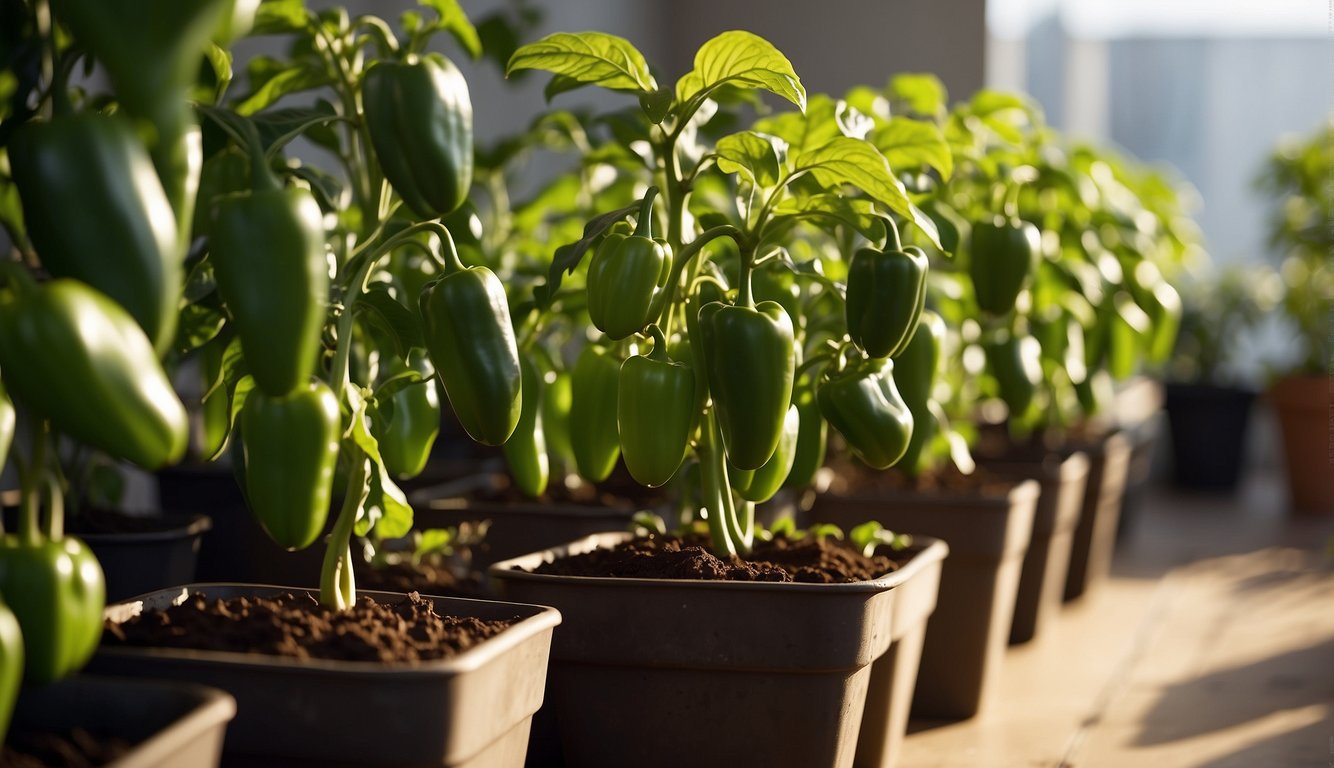
Growing peppers indoors year-round can be a fun and rewarding experience for anyone who loves gardening or cooking. With the right supplies and techniques, you can enjoy fresh, flavorful peppers all year long, regardless of the weather outside.
As I have discussed earlier in this article, peppers originated in Central and South America and have been cultivated for thousands of years. Today, they are one of the most popular vegetables in the world, and for good reason. Not only are they delicious and versatile, but they are also packed with essential vitamins and minerals.
Growing bell peppers indoors is a great way to ensure a steady supply of fresh peppers throughout the year. As I have mentioned before, it is important to choose the right varieties of peppers to ensure a successful harvest. Some of the best varieties for indoor growing include sweet bell peppers, jalapenos, and habaneros.
To successfully grow peppers indoors, you will need to provide them with plenty of light, warmth, and water. Using a high-quality grow light is essential, as peppers require at least 12 hours of light per day to thrive. Additionally, you will need to keep the soil moist but not waterlogged, and fertilize your plants regularly to promote healthy growth.
Overall, growing peppers indoors year-round is a fun and rewarding hobby that anyone can enjoy. With the right supplies and techniques, you can produce a bountiful harvest of fresh, flavorful peppers that will add a touch of sophistication and flavor to any dish.
Grow Peppers Indoors Year Round: A Spicy Adventure
Today, we’re turning up the heat with indoor pepper plants. Yes, you can grow peppers indoors year round! It’s a spicy adventure that’s sure to add some zest to your life.
Growing peppers indoors is a fun and rewarding experience. You get to watch these fiery plants grow and flourish, all from the comfort of your own home. Plus, you’ll have fresh peppers on hand for all your culinary creations. Talk about a win-win!
Now, let’s tie this back to theherbprof.com. As an enthusiastic Herbalist Blogger, I’m all about empowering you to take control of your herbal journey. And growing your own peppers indoors is a perfect example of this!
By growing your own peppers, you’re not just spicing up your meals. You’re also embracing the principles of indoor gardening and sustainable living, topics I’m passionate about and often discuss on my blog, theherbprof.com.
So, why not give it a try? Get out there, get your hands dirty, and start growing your own peppers indoors. Your taste buds (and your dinner guests) will thank you!
References – Grow Peppers Indoors Year Round
Little Herb Encyclopedia, by Jack Ritchason; N.D., Woodland Publishing Incorporated, 1995
The Ultimate Healing System, Course Manual, Copyright 1985, Don Lepore
Planetary Herbology, Michael Tierra, C.A., N.D., Lotus Press, 1988
Handbook of Medicinal Herbs, by James A. Duke, Pub. CRP Second Edition 2007
The Complete Medicinal Herbal, by Penelope Ody, Published by Dorling Kindersley
Check the Following Articles!
Kale Variety: Exploring All Different Types
Pothos Trim Roots: How to Do It Correctly
Grow Your Own Hops: A Guide to Home Hop Cultivation
Frequently Asked Questions – Grow Peppers Indoors Year Round
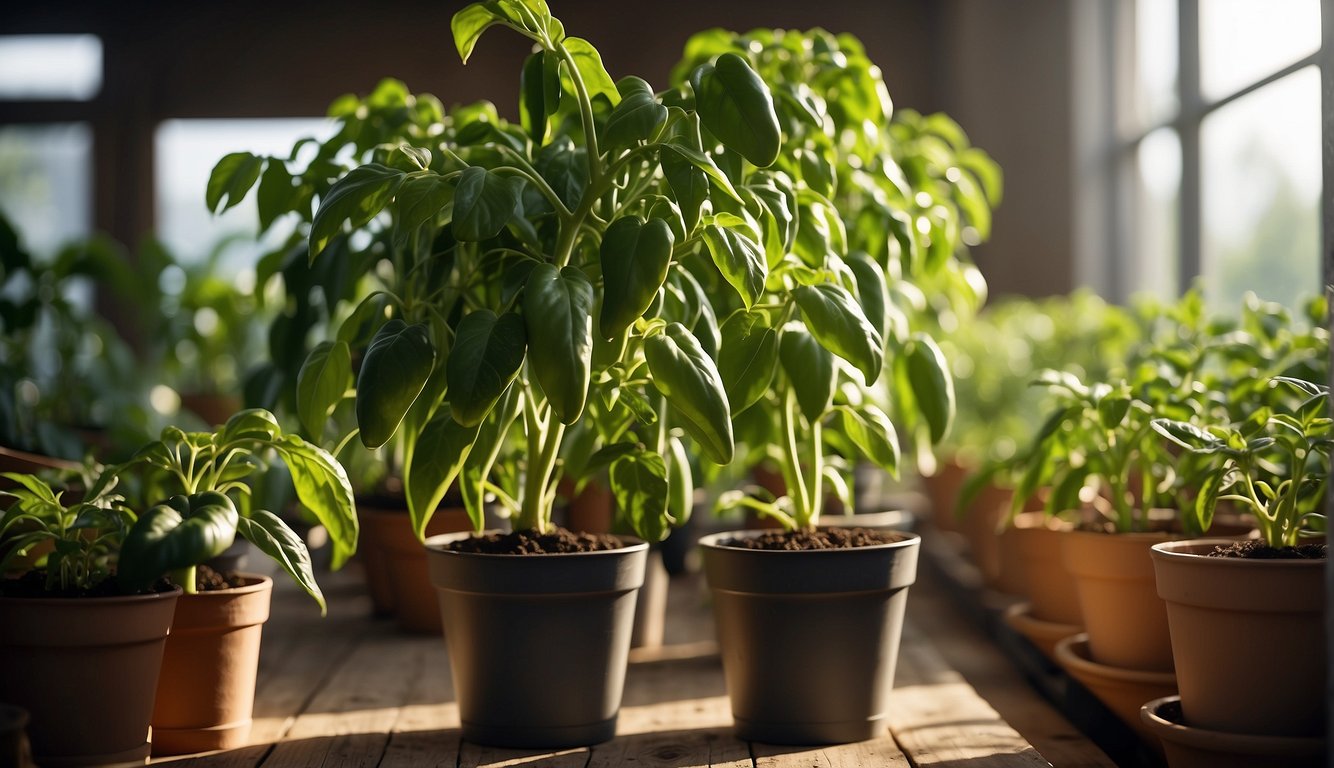
What are the easiest pepper varieties to cultivate indoors?
Some of the easiest pepper varieties to cultivate indoors include bell peppers, jalapenos, and chili peppers. These varieties are hardy and can thrive in indoor environments with the right growing conditions.
What type of grow lights are best for indoor pepper cultivation?
LED grow lights are the best type of grow lights for indoor pepper cultivation. They are energy-efficient and provide the right spectrum of light that pepper plants need to grow and thrive.
How can you successfully grow peppers from seeds inside your home?
To successfully grow peppers from seeds inside your home, you need to start by selecting high-quality seeds. Then, you should plant them in a nutrient-rich soil mix and keep them in a warm and humid environment until they germinate. Once the seedlings have sprouted, you can transplant them into larger containers and provide them with adequate light and water to promote growth.
Which pepper species are most suitable for indoor gardening?
The most suitable pepper species for indoor gardening include sweet bell peppers, jalapenos, and Thai chili peppers. These varieties are compact and can be grown in small containers, making them ideal for indoor spaces.
What are the steps to grow peppers hydroponically indoors?
To grow peppers hydroponically indoors, you need to start by selecting a suitable hydroponic system. Then, you should plant the pepper seeds in a growing medium such as rockwool or coconut coir and provide them with a nutrient-rich solution. You should also ensure that the hydroponic system is properly ventilated to prevent mold and fungal growth.
How do you handle pollination for pepper plants grown indoors?
Pepper plants grown indoors require manual pollination since they do not have access to natural pollinators such as bees or butterflies. To pollinate your pepper plants, you can use a small paintbrush or cotton swab to transfer pollen from the male flowers to the female flowers.
